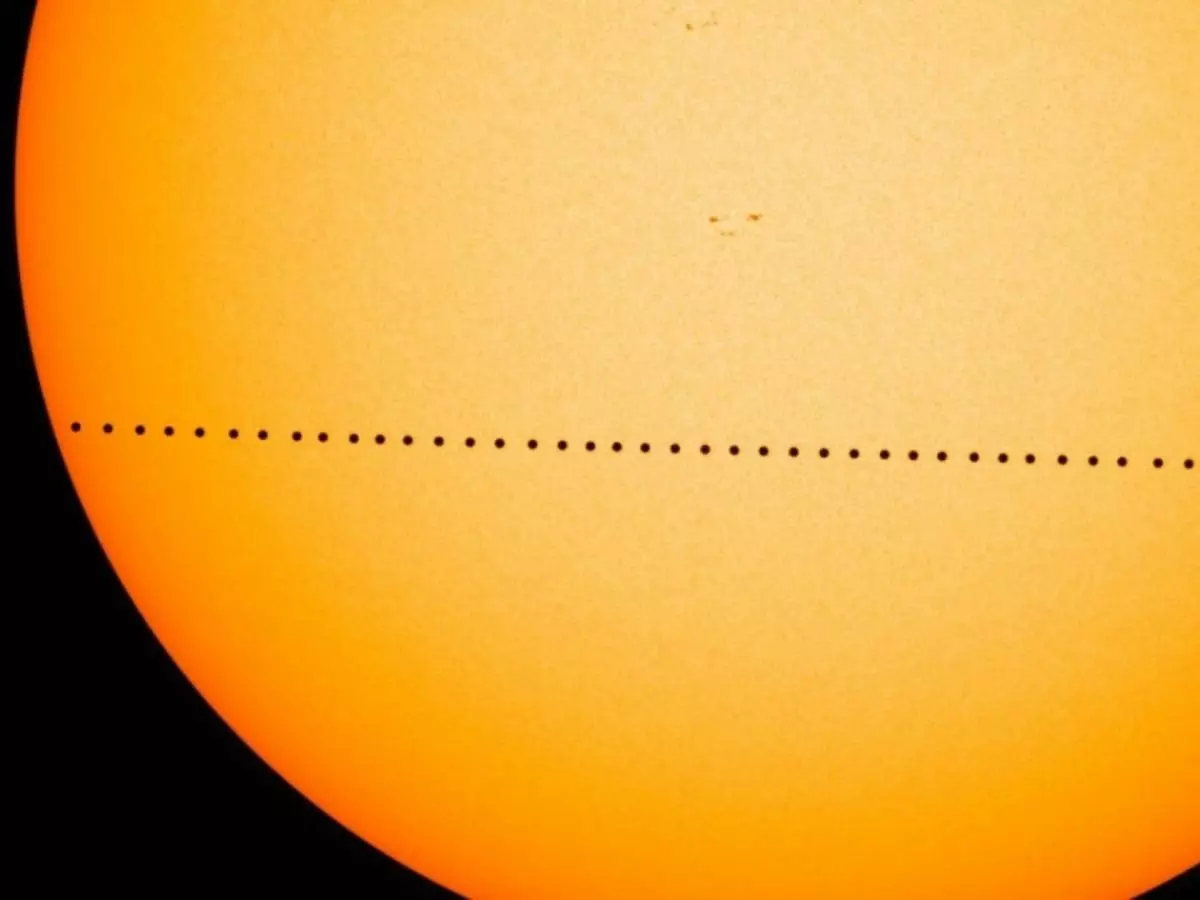Here's What's Happening As Mercury Makes Its Way Across The Face Of The Sun
Later today, for those of you watching the skies, Mercury will transit across the Sun for the first time since 2016. Sadly, you wonĄŻt be able to see it directly from India, but the photos from elsewhere in the world are bound to be spectacular.

Later today, for those of you watching the skies, Mercury will transit across the Sun for the first time since 2016. Sadly, you won't be able to see it directly from India, but the photos from elsewhere in the world are bound to be spectacular to peruse.

Images courtesy: NASA
Mercury is the smallest planet in our Solar System (Pluto doesn't count for most scientists because of the uncertainty surrounding its status), and its eccentric orbit means it doesn't often pass between the Sun and Earth. When it does, it's so far away from us that the shadow it casts is a dot that's only visible via telescope.
It's the first time Mercury is passing in front of the Sun from our vantage point since 2016, and it won't do so again until 2032. At around 6 pm IST, it'll begin a 5.5-hour phase of transit, which will be visible from much of North America, all of South America, as well as Africa, Europe, and western Asia.
You're not really going to be able to spot the transit with the naked eye, and you shouldn't try to because that'll just blind you. Similarly, don't stare at the Sun through just binoculars or a telescope either. Instead, it's best to use a solar filter, the same kind you use to watch an eclipse.

What you'll see will be a small black speck passing across the face of the Sun, which will appear about 194 times larger. If you're not in a place where you can catch this, The Virtual Telescope Project will be streaming a live viewing here.
Venus is the only other planet that can transit the Sun from our angle, because it involves the planet passing between us and our star. Venus transits occur in pairs about eight years apart from each other. Each pair however only occurs once every 105.5 to 121.5 years apart, which means the next one is in 2117. Mercury transits meanwhile are far more frequent, since it has a much smaller orbit around the Sun.
Aside from just looking cool, Mercury's transits have also served a scientific purpose. Back in the 17th century, astronomers used the transits to determine how far the Earth is from the Sun, using the concept of parallax. Another team in the 1970s used this to indirectly calculate how tidal forces of the Moon affect Earth.

More recently in 2006, one team of researchers performed experiments to see if Mercury's transit would affect the amount of light from the Sun reaching us, a concept scientists still use to spot exoplanets around distant stars.
Hopefully you'll have a chance to watch this cool event when it happens. And if you don't, worry not. We'll have pictures for you anyway.
